Review: 2011 Dodge Durango Citadel
The Chevrolet TrailBlazer and its many sibs are extinct. The Ford Explorer nameplate survives, but it’s now attached to a car-based crossover. Only one family of domestic midsize conventional SUVs remains—and, quite ironically, it’s based on a Mercedes platform. We’ve examined the five-seat Jeep Grand Cherokee before. For those more focused on people hauling than rock crawling Chrysler more recently introduced the seven-seat Dodge Durango. Is the all-new 2011 Durango only for people who need the dependable towing capacity of a conventional SUV? Or can it compete with the transverse-engined competition on their own terms?
As in its first two generations, the 2011 Dodge Durango combines the width of a midsize SUV with the length of a full-size SUV. The third-generation’s clean, well-proportioned exterior is a huge improvement over the perpetually pregnant previous one. If there is any fault with the new SUV’s handsome styling it’s that little aside from a crosshair grille distinguishes it as a Dodge. Also, it could easily be from a decade ago. But there’s also much to be said for timeless designs. The new Durango might not be au courant, but it also won’t look dated tomorrow.
The 2011 Durango’s interior is similarly almost too tasteful for its own good. The design could hardly be simpler, and some areas like the center console appear plain. With no racy curves and no fancy graphics, there’s nothing in here to surprise and delight—unless you’re surprised and delighted to find first-rate materials in a Dodge. Chrysler has upgraded nearly all of its interiors for the 2011 model year, and those in the Durango and the related Jeep Grand Cherokee are the best of the bunch. Not only does the top-of-the-line Citadel’s tan leather with black stitching feel as good as it looks (black leather is also available), but just about everything feels solid enough to go the distance. In terms of interior materials and workmanship, the more highly styled Ford Explorer is a step or two behind and GM’s large crossovers are hopelessly outclassed.
Getting into the Durango highlights its first serious deficiency: the floor is considerably higher than in a car-based crossover, so it’s not as easy to step up onto. Once you’re up in the seat, though, the driving position is very good. The instrument panel and the pillars flanking the windshield are far less massive than those in the Ford. The Dodge’s windshield is comfortably raked and is neither too close nor too distant. Then there’s the width of the interior. With 58.5 inches of shoulder room up front, the Durango is about three inches narrower inside than the Explorer and GM’s large crossovers. There’s less headroom in the Dodge as well. So people seeking the roomiest possible vehicle won’t find it in the Durango. But, for others, the Durango’s cozier interior together with its driving position make it easy to drive for a vehicle that’s nearly 200 inches long and nearly 5,400 pounds.
The front seats are firm, perhaps too firm for some people. My main problem with them: I had to struggle to position the four-way-adjustable lumbar support so that it didn’t prod me uncomfortably. It’s a great feature very badly executed. On the other hand, the headrests have some fore-aft adjustment, a rarity these days.
The second row is comfortably high off the floor. The third isn’t, but this is typical, and the new Durango’s way back is considerably roomier than in the past and competitive with the car-based competition. And, if the kids back there get out of line, there’s a button on the dash to whack them on the back of the head with the headrest. This also serves to lower the headrests to improve rearward visibility, which is limited regardless. The rearview monitor proves very helpful.
Partly because so much space has been allocated to the third-row seat, there’s less cargo space behind it than in the Explorer or larger GM crossovers. Good enough for sizable grocery runs, but on family trips all of the luggage isn’t likely to fit without folding a seat or putting some up on the roof. Fold both rows—very easily done, as unlike in the Explorer the headrests flop forward automatically—and there’s still much less cargo volume than in the GM crossovers (84.5 vs. 116.9 cubic feet), but a few cubes more than in the Explorer. The Dodge does have an ace up its sleeve: unlike in these competitors, its front passenger seat also folds flat, to form a very long load floor (except in the Citadel, where the front passenger seat power reclines).
The new Durango is available with two engines, a DOHC 290-horsepower 3.6-liter “Pentastar” V6 and a cam-in-block 360-horsepower 5.7-liter “Hemi” V8. I’ve sampled the former in the related Jeep Grand Cherokee, and found it sluggish up to 35 mph or so. A new transmission with more than five-speeds of the Mercedes-supplied unit would help, but one isn’t available yet. Until one is, the V8 is the obvious choice for anyone who cares about low-speed performance. Because of the Hemi-powered Durango’s curb weight and the tall initial gearing of its Chrysler-engineered five-speed automatic (where the ratios are based on what was doable rather than what was desirable), even the V8 feels a little soft up to 4,500 rpm. Bottom line: with the 2011 Durango you need the V8 to match the low-speed performance of the V6s in competitors. 360 horsepower isn’t what it used to be.
In which case you won’t be matching their fuel economy. While the Durango V6 AWD earns competitive EPA ratings of 16/22, the Hemi AWD manages only 13/20 despite the ability to run on four cylinders while cruising. Even the old-school Chevrolet Tahoe achieves 15/21. In the real world the trip computer reported 13.5 to 16.5 in suburban driving but only about 18 on the highway.
In the V8’s defense, you can tow 7,200 pounds with it (7,400 with RWD), which is over a ton more than with car-based competitors. And the official specs might understate the difference. The longitudinal transmission in the Durango was designed with a high towing capacity in mind, and has been used in Dodge trucks for years. The transverse automatic in the Explorer and GM crossovers is inherently more fragile, and was designed primarily for use in cars. So if you need to tow a few tons the Dodge has a clear advantage.
If only the Durango’s brakes felt as strong as its powertrain. While they might be up to the task when pressed (with no mountains nearby and nothing to tow, I didn’t work them hard), they require an unusual amount of effort. Press down with a typical amount of force and it seems like the Durango doesn’t want to stop.
Partly because you sit so high, the Durango feels less agile than the Explorer and large GM crossovers. A VW Touareg feels even more car-like, aided by more compact dimensions and firmer suspension tuning. But the Durango’s handling is stable, balanced, and thoroughly predictable, with better body control than you’ll find in large conventional SUVs like the Chevrolet Tahoe and Ford Expedition. It also feels less massive and bulky than the platform donor Mercedes GL-Class, or the Infiniti QX56, for that matter. The Dodge’s all-wheel-drive system effectively limits the potential for fun. With it the attitude of the chassis is always dull but safe moderate understeer. I drove a rear-wheel-drive Durango earlier, when there was snow on the roads, and found it much more entertaining, with progressive, easily controllable oversteer when powering out of turns. I didn’t feel the need for all-wheel-drive, though the great majority of snow belt residents will no doubt insist upon it. The stability control system works very well, smoothly intervening only as much as is necessary.
While some bobbling is unavoidable with such a tall vehicle, the Durango generally rides very smoothly and quietly. Above all, it feels solid and precisely controlled the way premium European vehicles tend to. In comparison the large GM SUVs and, to an even greater extent, the large Ford SUVs feel unrefined and dated. Even the car-based crossover’s from these manufacturers can’t quite match the Dodge in this regard. Between its ride and its interior the Durango oozes quality.
The 2011 Durango has the look and feel of a premium car, but not necessarily a premium price. The tested vehicle’s $48,530 sticker might seem steep, but this is the top-of-the-line Citadel with every available option except the towing package. (A Durango Crew with V6, AWD, and leather lists for $37,565.) A similarly loaded 2011 Ford Explorer lists for $400 more. Adjusting for feature differences using TrueDelta’s car price comparison tool give’s the Ford a $1,775 advantage, but removing the $1,895 Hemi from the equation would more than cancel this out. Compared to the GMC Acadia, the Dodge with the Hemi is about $500 less before adjusting for feature differences and about $2,250 less afterwards. Remove the Hemi and the Dodge is significantly less expensive than the GMC. And compared to the Mercedes-Benz GL450 that provided its platform? Over $32,000 less before adjusting for feature differences, and nearly $29,000 less afterwards. From this perspective the Dodge could be a bargain.
Ultimately, the 2011 Dodge Dodge competes strongly with the Ford Explorer and large GM crossovers on their own terms. It does have a higher step-in and tighter interior, but handles nearly as well, rides better, and looks and feels considerably more expensive—without actually being more expensive. For heavy towing, GM and Ford offer only large conventional SUVs, and these feel unrefined and dated in comparison. The Durango’s weakest area: its transmissions. Fuel economy lags with the V8, while the V6 needs a transmission with a larger number of better ratios to provide competitive low-speed performance. Granted, most people drive in a relaxed fashion and so will find nothing wrong with the current powertrain. For the others, a new transmission is on the way.
Dodge provided the Durango Citadel, insurance and one tank of gas for this review.
The Durango Crew was provided by Michael Williams at Southfield Dodge in Southfield, MI (248) 354-2950.
Michael Karesh operates TrueDelta.com, an online source of automotive pricing and reliability data.
Michael Karesh lives in West Bloomfield, Michigan, with his wife and three children. In 2003 he received a Ph.D. from the University of Chicago. While in Chicago he worked at the National Opinion Research Center, a leader in the field of survey research. For his doctoral thesis, he spent a year-and-a-half inside an automaker studying how and how well it understood consumers when developing new products. While pursuing the degree he taught consumer behavior and product development at Oakland University. Since 1999, he has contributed auto reviews to Epinions, where he is currently one of two people in charge of the autos section. Since earning the degree he has continued to care for his children (school, gymnastics, tae-kwan-do...) and write reviews for Epinions and, more recently, The Truth About Cars while developing TrueDelta, a vehicle reliability and price comparison site.
More by Michael Karesh
Latest Car Reviews
Read moreLatest Product Reviews
Read moreRecent Comments
- Calrson Fan Jeff - Agree with what you said. I think currently an EV pick-up could work in a commercial/fleet application. As someone on this site stated, w/current tech. battery vehicles just do not scale well. EBFlex - No one wanted to hate the Cyber Truck more than me but I can't ignore all the new technology and innovative thinking that went into it. There is a lot I like about it. GM, Ford & Ram should incorporate some it's design cues into their ICE trucks.
- Michael S6 Very confusing if the move is permanent or temporary.
- Jrhurren Worked in Detroit 18 years, live 20 minutes away. Ren Cen is a gem, but a very terrible design inside. I’m surprised GM stuck it out as long as they did there.
- Carson D I thought that this was going to be a comparison of BFGoodrich's different truck tires.
- Tassos Jong-iL North Korea is saving pokemon cards and amibos to buy GM in 10 years, we hope.




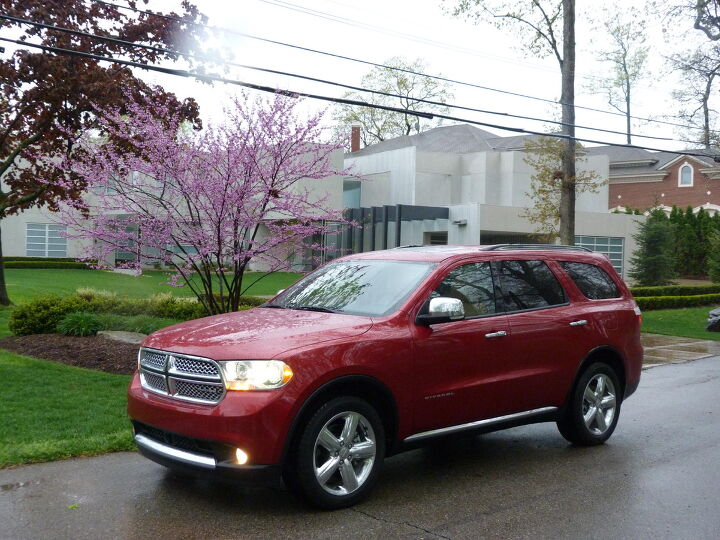





































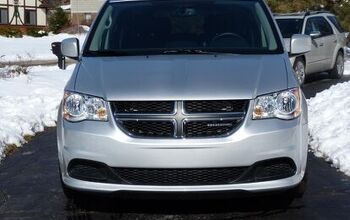
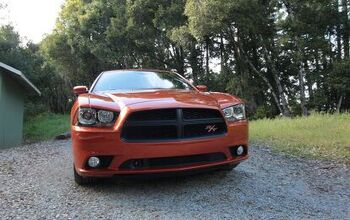
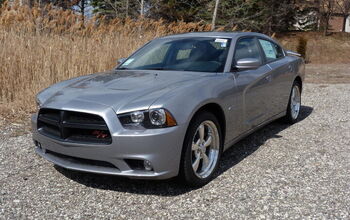
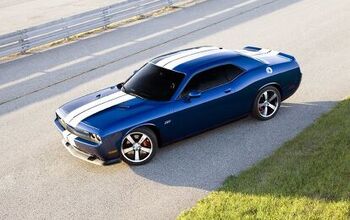










Comments
Join the conversation
I have had two Gen 1 Durangos, one was an R/T and loved it other then it felt like my Dakota R/T ride. Just got a 2012 Citadel for the wife since the old R/T was breaking down a lot with over 150K miles, she rides as nice as the Benz. It is loaded and has the only four options available in her. Inside working the gear is the same as my CL65 Benz and a few I do not have and need to learn. Tried to push the Wife to a GL450, but the wife was not having none of that, see likes the smaller size and wants to have three sets of seats. We are both happy with the Citadel. Only thing I have on her is the V-12 BiTurbo and namesake. Are Citadel has the 5.7l Hemi and is nice and who need 604HP and 740 foot pounds of Balls in an SUV. BTW, not talked about much is, Dodge offers a life time warranty now. I keep cars a long time and jumped on it.
BTW, I towed a Ranger Z-21 bass boat with the R/T many miles and that boat is heavy. I got a RAM SRT-10 when the Wife was in my butt about taking her SUV, not the best towing truck but met my needs for speed and towing. When we travel to my home (900 miles away) and SUV or CUV works well, but we need room, I have grand kids and more family. Put down the seats and chill. We have had family of seven or many times on these visits traveling and some times need another car for everyone to share the joy. All the plus and minus people have about this vehicle means nothing for me since it now drives like a car and does the same things. Durango was a freak and some of us are freaks and it has a place. Works for me, Soccer Moms?